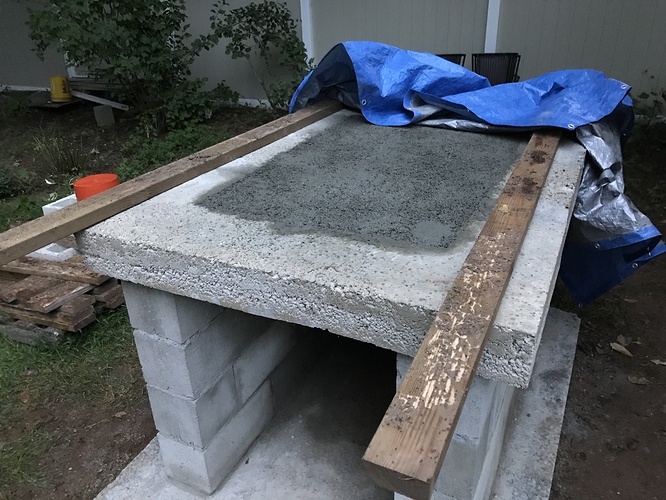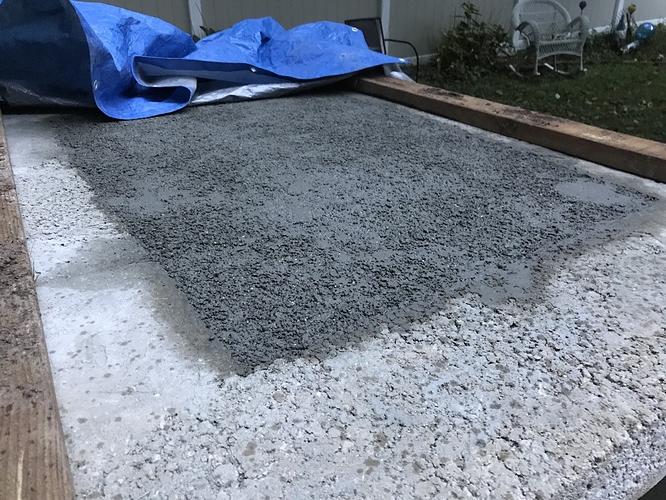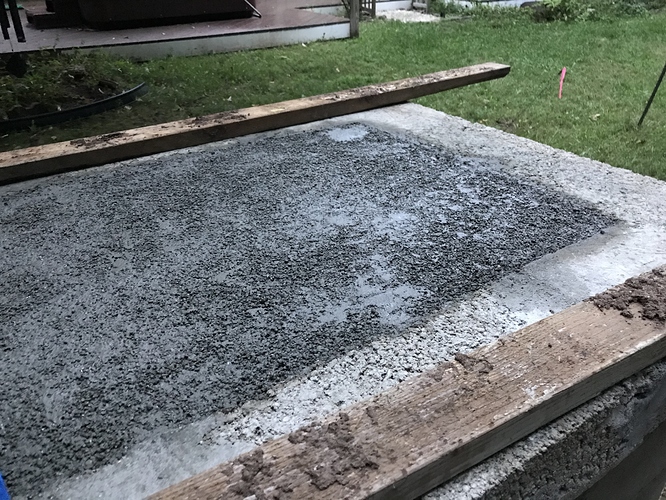I am building a Mattone Barile Grande, and am getting ready to start with the “oven” part of the oven. The first step in doing that is really the last step of building the base: installing insulation for the oven floor. This is the first thing you will do that actually does something oven-like.
I chose to use a Perlite/Portland Cement mix. I decided on Perlite for two reasons:
- It is a water-repellant mineral, rather than a water-absorbent mineral like Vermiculite. So, it will cure more quickly because it’s not trying to retain moisture.
- It costs 25 percent less than the same quantity of Vermiculite.
I found both Perlite and Vermiculite at my local orange big-box store, in the indoor nursery section, in 2 cubic foot bags. The materials bill calls for 4 cubic feet, and since I was there to purchase Portland Cement it meant one less shopping stop. The price (about $15 for a 2 cubic foot bag) was competitive with other sources.
If your eyes bug out when you see two big bags of either material, especially when you compare that with the apparent volume of the void you created in your slab, they should—but only a little. Volume of a space is always tricky to estimate by eye, because most of us have a very hard time with 3-dimensional space and measurement. You’ll need much more material to fill that “shallow” void than your eyes tell you you’ll need.
I found what I needed around the house to measure Perlite and cement in the proper 5:1 ratio. I have a 10 quart cleaning bucket—voila! 2 buckets equals five gallons. I also have a 1 quart measuring cup I’ve been using to measure water into my concrete. So, 2 buckets of Perlite and 4 cups of dry Portland Cement = 6 gallon dry mix. And of course, 1 bucket and 2 cups is a half batch.
The good news is that this is not back-breaking work like concrete mixing. Pour Perlite into a wheelbarrow, add Cement, then dry-mix with a hoe. When the white Perlite is coated with gray, spray lightly with water. Do this just enough for the surface Perlite to turn white again. Mix with the hoe until all the Cement is wet and the consistency is, as they say, like oatmeal. I found that when the mix of materials and water is correct, the hoe will make a shoop-shoop noise as it’s pulled through the mix.
Even when mixed, the insulation will be very lightweight and easy to transfer.
I used my material transfer shovel to transfer the mix to the slab. I spread it out to the edges, then used my tamper to compact it. Then, I repeated.
It took 3½ loads to fill the void, with just a little left on the slab when I had screeded for the last time. I troweled it smooth, then decided to float it as well.
I found that I only needed 2 cubic feet plus 2½ gallons of Perlite from the second bag. And, since Portland Cement around here comes in 94 pound bags, I still have plenty of that left over as well. The remaining Perlite (almost a full bag!) will go to good use in my spouse’s garden, and there’s plenty of call for the remaining Cement in this project.
Cleanup for this part will offer another surprise: when you rinse your tools, you’ll find that the Perlite quickly washes clean. Useless information, perhaps, but it gave me a smile.


